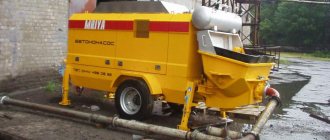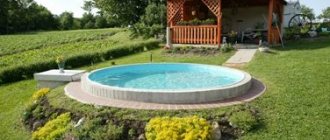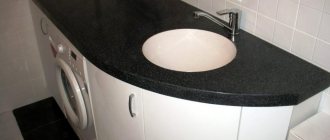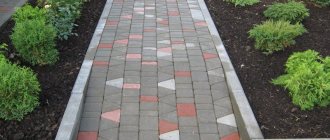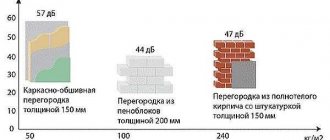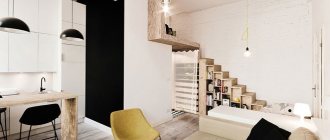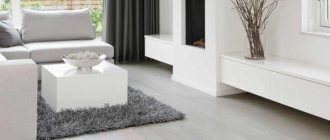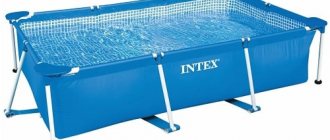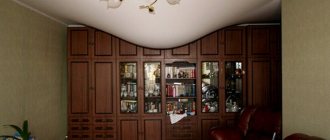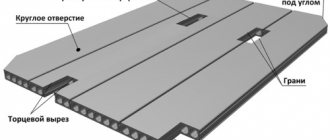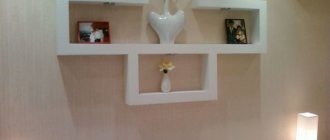What is it, what types are there?
An indoor pool is a complex indoor hydraulic structure, including a bowl, a drainage system with filtration and water supply.
Each type of pool has its own distinctive features. Main types:
Stationary .
This is a structure whose bowl is made of plastic or concrete. Before installation, it is necessary to conduct a soil survey. The bowl can be made of plastic or composite material, and is often cast from concrete.The main difference between an indoor pool is the presence of a roof or a special pavilion for protection.
- Collapsible (frame) . They are not inferior in size to stationary ones, they differ in the installation method. Instead of going deep into the ground, they are placed on a flat area. Pools of this type are covered with awning tents.
- Inflatable . They are close in size to small frame pools, not exceeding a diameter of one and a half meters. They are installed on the site under canopies.
What are indoor pools for cottages made of?
When choosing a pool, you should remember that they can be made of any materials. This is especially true for stationary models. Manufacturers fell in love with materials such as plastic, polypropylene and other composite materials.
Products made from polypropylene have good characteristics and can withstand temperature changes well. They can be used all year round.
Plastic containers are more fragile and may burst when the temperature drops. It is not used to create large tanks, but is not uncommon for medium-sized tanks. It is also used for folding structures and decorative colored pools.
More practical models are made from composite. The material can transform, but the body does not break through. The walls cannot be scratched or broken. Such a pool will be durable, which is why it is used to create an indoor pool.
But all types have one drawback - they have a standard appearance, so if you want an unusual pool, you will need to build it yourself. Yes, it’s expensive, but it’s the way your heart desires.
Separation by filling type
According to the filling methods, pools can be:
- Overflow.
- Skimmer.
In the first models, a grate is made in the tank, through which overflowing water enters the storage tank. This system visually increases the size of the container and allows you to always maintain a certain water level.
In skimmer models everything is somewhat different. They cannot be filled to the brim of at least 15 cm, since there are no storage tanks. The water that enters the tank is purified through a skimmer. This is an inexpensive option, which is why it is very popular in the private sector.
Finishing materials
An indoor swimming pool at your dacha can be decorated with the following materials:
- Polypropylene.
- Mosaic.
- Tile.
- PVC film.
The film is sold in rolls and can be of any color. The most popular are blue, white, light blue shades. The role of such finishing has a dual meaning: waterproofing and aesthetics.
Polypropylene is a polymer that has high strength, is easy to weld and is resistant to aggressive climate conditions. Usually they buy blue polypropylene.
But mosaics and tiles are chosen with a low level of water absorption. Ceramics are used to decorate a public pool, and mosaics will fit perfectly into the landscape of a summer cottage. A pool with this finish will appear visually deeper.
Advantages and disadvantages
Among the advantages are:
- the presence of a roof - in any weather it will serve as protection from the sun’s rays, since the roof reflects light well and creates a shadow underneath;
- the canopy protects the pool from pollution and mechanical damage, allowing the water to remain clean for a long time;
- at optimal water temperature, you can use the pool in any weather, with protection from rain and wind;
- with a domed roof, the evaporation of water can be reduced, along with it the evaporation of chlorine will decrease, and the water will always be properly disinfected, regardless of the weather;
- the canopy acts as protection from prying eyes - along with the pool, you can also cover part of the yard, creating a secluded place from the neighbors’ eyes;
- in unfavorable climatic conditions, it is often common to combine a swimming pool with a greenhouse - this allows the heat from the heated roof to transfer heat not only to the water, but also to the plantings.
Among the disadvantages are:
- high price - even if you choose a cheap design, you will have to invest a lot of money in its installation, but all investments pay off, an uncovered pool is subject to much greater contamination, which entails losses in the form of special cleaning and disinfectants and devices;
- the roof must be located at the optimal height - if you install it close to the pool, a greenhouse effect is formed, which negatively affects both the well-being of swimmers and the roof itself due to the formation of condensation, in which case special drainage equipment will be needed.
Classification of country home pools
In order to make a good choice, you need to decide on the location of the future swimming pond and the method of its construction. It is also important to understand what types of pools are available for cottages and homes.
Winter and summer ponds
Depending on the location of installation and seasonal purpose, the following types of pools are distinguished:
- winter;
- summer;
- covered (combined).
You can enjoy swimming, regardless of the time of year and weather forecasts, by having a year-round pool installed on the lower floor of the house or in the semi-basement. Among the undoubted advantages of a home indoor pond: no need for frequent water purification, energy savings and easy maintenance.
It is advisable to provide for its design when designing a building - interfering with the structure of an existing house is unsafe for its stability and strength. Successful options for swimming pools for a home or winter cottage are the construction of an extension to the building or the construction of a separate room on the site.
On summer days, it is much more pleasant to swim in outdoor pools equipped in the fresh air. However, they need more careful care and protection from pollution - street dust, insects and falling tree leaves.
A canopy will help to significantly facilitate cleaning and protect water from direct sunlight that reduces its quality. For the same purpose, it is convenient to cover the surface of the reservoir after swimming with a special roller shutter or solar film.
You can continue to use your garden pool even in the cooler months if you arrange it in a sliding pavilion equipped with a heating system. A spectacular dome, tent or arch made of transparent polycarbonate will not only insulate the pond, but also decorate the garden area.
Recessed and surface structures
According to the method of construction, pools are:
- buried;
- raised;
- semi-recessed.
Creating buried concrete pits to install a bowl at ground level is the most common method for creating large-volume country pools. Its advantages: reliability, strength and durability of the structure.
Raised or semi-buried pool options are installed on a surface or partially sunk concrete foundation. Their construction is advisable when using a ready-made cast bowl or a prefabricated structure, if the height of the wall of the reservoir does not exceed 1.5 m.
Skimmer and overflow cleaning systems
Based on their design features, there are different types of pools:
- skimmer;
- overflow.
Their difference is in the water circulation and purification systems and design. In skimmer tanks, the water level is 10-20 cm below the edge. The most contaminated top third of the water is removed with a wall skimmer. The lower layers are filtered using bottom drains.
In overflow systems, the level of the water surface coincides with the side or floor. Water purification occurs using lattice gutters located around the perimeter and an additional filtration tank. Overflow pools are easy to use and look stylish and respectable, but they are much more expensive than skimmer pools.
How to do it yourself?
The construction of a swimming pool always begins with the design stage. 3D modeling is best suited for this; even a beginner can handle it . Also, ready-made works from the Internet or author’s sketches can serve as a sketch.
Also, when designing, you should carefully study the topography and quality of the soil, select the most suitable site for building a pit and decide on the necessary materials, shape and size of the pool.
Which material to choose?
The material used for the pool roof must be durable and moisture resistant. Suitable for these purposes:
Aluminum . Lightweight and durable material, characterized by low susceptibility to corrosion and easy maintenance. Used to create frames of various shapes and sizes.- Steel . It is used in the manufacture of small fixed frames of simple design. Prefabricated steel structures require special processing and painting.
- Polycarbonate . It is impact resistant and can have a smooth or honeycomb texture. The first type is similar to glass and stronger than its analogues, and due to its relative transparency, the material protects from sunlight. Available in a wide range of colors.
- Glass . Used in the production of large non-curved canopies. Impact-resistant glass is optimal for installation.
- Film . The most common option is used for the manufacture of large-area roofs. The only negative is its low strength, as it is easily damaged by heavy rain or hail.
- Awning fabric . It is highly durable and does not allow sunlight to pass through.
Finding a place on the site
When choosing a location for a future pool, you need to approach it wisely. Factors affecting installation:
- relief - you need to install the frame on a flat area with direct access to sunlight;
- to reduce the likelihood of water pollution, the pool must be installed away from trees;
- You should not mount the structure near walls or large structures - the shadow falling from them will interfere with uniform heating of the water.
Microclimate and air exchange
The ventilation system is extremely important to maintain the quality of the roof. In open areas, moisture quietly evaporates from the surface. In an indoor pool, it accumulates as condensation and contributes to the formation of fungus.
To maintain temperature and humidity within normal limits, various heaters, dehumidifiers, and air conditioners are used. To determine the necessary devices and their location, consultation with a specialist is necessary.
Constant air exchange with the external environment ensures the normal functioning of the devices and extends the life of the pool. To do this, it is recommended to maintain an optimal air temperature of about +25 degrees, humidity should not exceed 60%.
Construction of the bowl
There are 4 main stages in the construction of the bowl:
Digging soil for a foundation pit .
Such work often requires the use of special equipment. When digging, the dimensions of the pool, which are marked on the ground, are taken into account.- Filling the bowl .
Before the pouring stage, you need to fill the finished pit with sand and gravel, onto which the foundation is poured. After pouring, the process of constructing formwork and reinforcing the frame for the pool begins. The concrete must contain special components that provide waterproof properties. - Waterproofing . It is necessary to protect the structure in the event of a concrete defect. After dismantling, the surface is treated with a compound that opens the pores in the concrete, which are covered with a waterproofing solution.
- Finishing . The process of leveling the surface of a bowl with special plaster or decorative finishing. Mosaics or tiles are most often used, as this coating is distinguished by its uniqueness and durability.
How to build a roof?
An indoor pool requires the installation of a roof, most often an arched structure. You can build it yourself or order it from a specialized company.
The frame often consists of aluminum profiles lined with polycarbonate. The structure always contains detailed instructions, according to which you can easily assemble the roof.
Read about how to cover a pool here.
Equipment
In addition to the basic equipment in the form of ventilation systems, an indoor pool requires the installation of dehumidifiers . They can be industrial and semi-industrial. You can install the dehumidifier on the wall or integrate it into the structure. The first option is optimal, since with convenient access to the device it is easy to maintain its condition.
Filters and a pump are considered one of the most important devices. Their selection is carried out in accordance with the volume of water and the shape of the pool. The filter is necessary to maintain the optimal water level, purify it and return it to the system.
It is also necessary to install devices to maintain humidity . And as a bonus, hydromassage systems or single small fountains are installed.
Read more about pool equipment here.
Pool based on factory tank
Like any building structure, an artificial reservoir needs careful design.
Attention! Since there is practically no possibility of dismantling and moving the structure, it is very important to correctly determine the location.
Installation of an indoor pool at a dacha using a factory-made tank includes the following steps:
- It is necessary to prepare a pit, the size and shape of which fully corresponds to the finished bowl.
- To place a communications complex at the dacha, you will need to equip an underground room. It installs filtration, water supply and drainage systems.
- Due to the operation of electrical equipment, care should be taken to ensure that the technical room is free of moisture and has waterproofing.
- After installing the finished container and checking the coordinated operation of all systems, they proceed to arranging the ceiling for a closed structure in the country. For its construction, as a rule, a polycarbonate greenhouse structure is used. This is the most practical option to make an indoor pool at your dacha.
Where and approximately at what price can I order production?
The construction of a swimming pool can be ordered from one of many specialized companies. For example, in Moscow and the Moscow region some of the best companies are: PulMarket, Gidrostroymontazh and Basseynoff.
The price is influenced by the following criteria:
- complexity of the project;
- pool area;
- soil features and geological complications;
- features of external and internal finishing, waterproofing;
- technical additions: stairs, bridges;
- pool equipment.
The construction of the pool bowl will cost about 800 - 900 thousand rubles. This price (including all materials) includes:
- pit preparation – 50 thousand,
- preparation of a concrete bowl and base - 350 thousand,
- waterproofing and cladding – 300 thousand,
- basic equipment - 200 thousand.
The price may vary, ranging from the size of the structure to the region of installation. The cost of a covered canopy averages from 50 to 100 thousand rubles. depending on materials and design.
Pool design
Before building an indoor pool, the project is calculated using ready-made sketches or photos, with all the design features. Moreover, you need to decide on the appearance and type of structure. Before designing, it is necessary to determine the following parameters :
- bowl shape;
- dimensions of the structure;
- design decoration.
It is advisable to entrust the project of an indoor pool to professionals, since it is necessary to study the area to determine the location of the structure. Studying the soil by geologists is an indispensable stage, since in order to build a reliable foundation, data on the condition of the soil is necessary.
How to care for an artificial pond?
Pool care includes several simple points:
- Monitoring the condition of metal structural elements: cleaning from rust, coating with special paints, primer or putty.
- Cleaning the outside of the pavilion using detergents and rinsing the inside of dirt with clean water. Abrasive or alcohol solutions are not recommended for use, and the use of rough objects is also excluded.
- To maintain the quality of an indoor pool when it is not needed, it is worth covering the water with a special solar film. This will reduce humidity under the dome and maintain the quality of the structure.
- When the weather changes and strong winds appear, you need to close the pavilion to all fastenings to ensure protection, and then not waste time on cleaning.
- In winter, clear the pool of snow and do this not only from the inside, but also from the outside. Under the pressure of snow, the roof can become deformed or even collapse.
Inflatable pool for a country house: types for children and adults
The simplest option for a summer cottage: purchasing and installing inflatable models. More recently, it was possible to create only stationary types of pools, but today such an option as an inflatable one has become very accessible.
These pools are created for both children and adults. Children's options are smaller in size and shallow in depth. Accordingly, adult models are much larger in size and depth, have greater strength and wear resistance, and are more expensive.
Inflatable model on a private plot
Inflatable pools for summer cottages are a compact solution for small private plots. They can be easily transported from place to place: therefore, you can take them with you on long trips. In winter, it can be stored deflated in a regular closet.
Preparing a place for such a pool does not take much time: you only need to clean up the debris on the territory so as not to accidentally puncture it with something sharp. Such pools should not be installed under trees, as the degree of contamination from leaves increases significantly, and mechanical damage from branches can also occur.
You should think in advance where you will drain the water from the inflatable pool. Of course, the best option would be to water the flowers, lawn or beds: this will save water, electricity and your time.
Collapsible pools are mainly produced in small and medium sizes. The installation process of such models does not take much time. There are several types:
- Core options.
- Sectional.
- Sheet frames.
The core version of the pools is characterized by a complex of horizontal and vertical racks. There is a special PVC design cover, as well as a water pump. The racks are assembled, the pipeline and pump are mounted, and the filter is installed. That's it - this view is ready for use.
Collapsible version of a mini-pond for a country house from INTEX
Sectional models are characterized by the presence of ready-made sections. Having built the structure, the pool bowl itself is mounted into it. Individual modules can be fastened in different ways: using glue, using a locking connection or with bolts.
Sheet frame pools are quite simple to install. The installation itself consists of the following: rolls are rolled out, the main structure is constructed, the bowl is installed and filters and pumps are mounted.
For this type, dismantling should be done every season: the pools are cleaned for the winter.
In your own swimming pool, it is especially pleasant to get a boost of morning energy and good mood, relax and recuperate after an eventful day, or simply refresh yourself in the summer heat. There is a truly impressive range of types of swimming pools for home and garden. The choice of the appropriate option depends on the preferences of the future owners, the specific layout of the premises or the garden landscape.
Photos of finished options
Below are photos of finished indoor pools:
Swimming pool combined with greenhouse
Swimming pool with polycarbonate roof
Swimming pool with glass roof
Location
It’s not enough to choose a pool, you need to think about how you will care for it, so we suggest planning everything in advance.
Important: if you have clay soil on your site, then this is an ideal option for installation.
When planning container placement, consider the following points:
- If your soil is clay, you don’t even have to choose a location for installation. If the waterproofing fails, it will stop water leakage.
- The area where you plan to place the pool should have a natural slope. In this case, it will be easier for you to dig a pit and choose a place to install the drainage system.
- You should not place an indoor pool in your dacha where there is shade from tall trees. Plants sense moisture and can easily damage the waterproofing. The most aggressive trees are willow, chestnut and poplar.
- If the pool is located near a water supply, this will make it easier to fill the container with water.
Finishing touches
An indoor swimming pool in a country house needs to be equipped with a drainage and water purification system. Installing permanent equipment for these purposes is a complex and expensive procedure. The option of purchasing mobile devices that include a powerful pump looks much more economical. This solution for a dacha is optimal. At the final stage of construction of an indoor pool, its cover is installed directly. As in the case of a factory-made tank, for a summer residence it is recommended to use a ready-made polycarbonate structure, which will provide an aesthetic appearance to the closed pool.
A swimming pool in a private home is no longer a luxury item. After all, you can do it yourself. If you have the necessary funds, you can buy the pool itself. However, a person who is a little familiar with construction work will be able to equip such a structure without the involvement of specialists. Before you make a pool with your own hands, you need to figure out what types of pools exist in general, and also learn about the pros and cons of each of them.
All swimming pools can be divided into two types:
- frame;
- foundation pits
Frame
Karasnye pools
Such pools are either located above the surface of the earth, or at least slightly protrude above it. Their distinctive feature is the presence of a frame. These structures are very convenient because they can be easily moved and also dismantled for the winter.
The disadvantage of frame structures is that they are very expensive. Although some craftsmen can make them themselves.
pit
Pool pit
This type of pool is inexpensive and can be made with your own hands without much expense. You just need to purchase concrete and waterproofing materials. The disadvantages of the pit structure are that it cannot be dismantled. Another disadvantage is the large volume of excavation work. After all, the master will have to dig a pit with an area of about 16 square meters.
